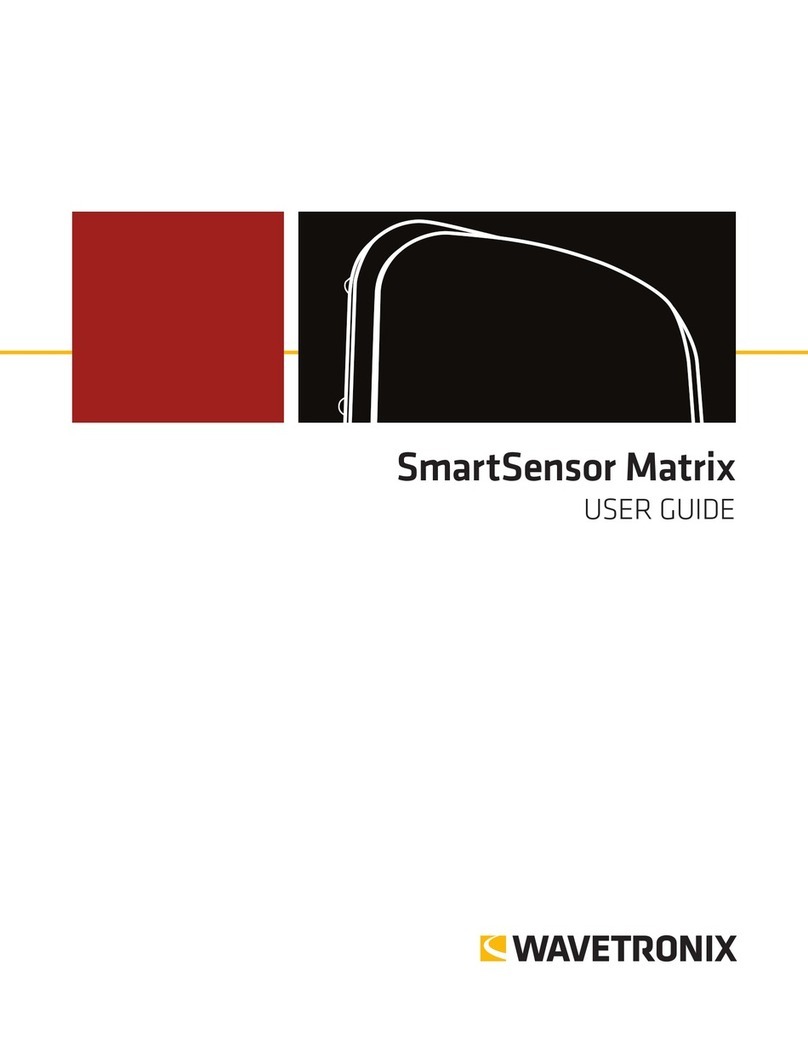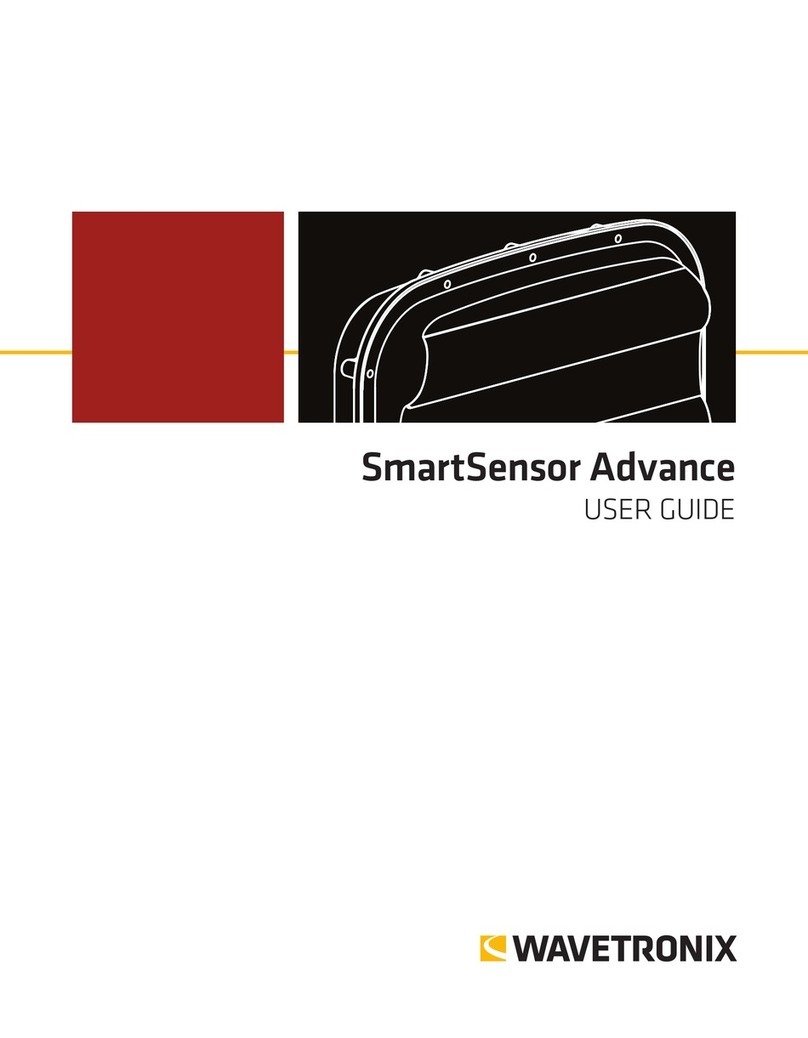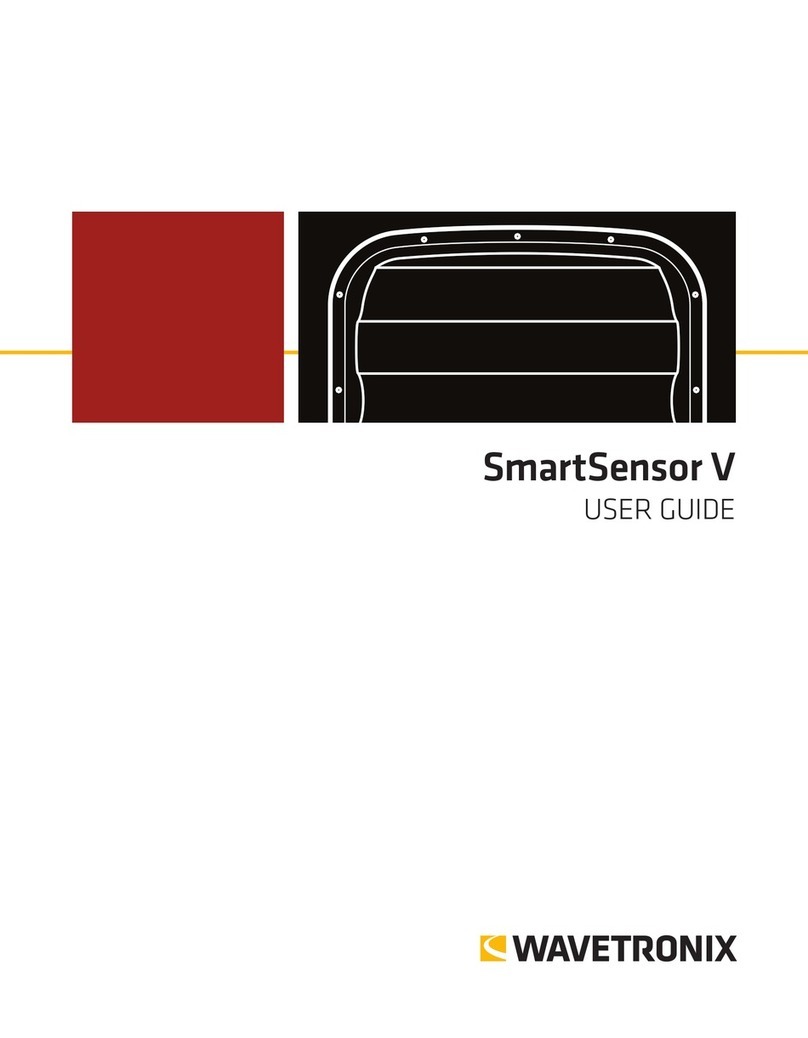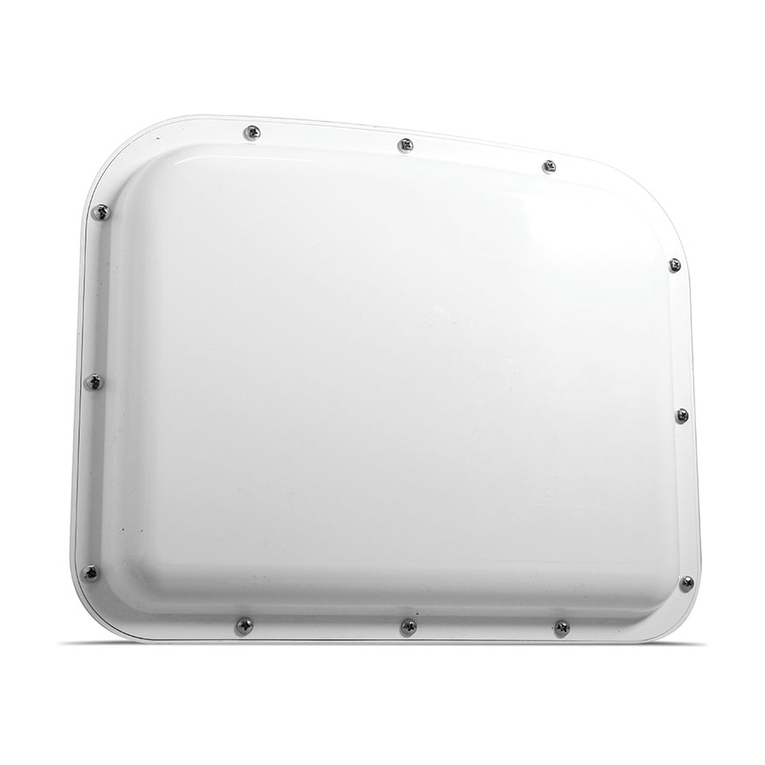
WX-500-0051
10/19
© 2019 Wavetronix LLC. All Rights Reserved.
Wavetronix, SmartSensor, Click, Command, and all associated product names and logos are trademarks of Wavetronix
LLC. All other products or brand names as they appear are trademarks or registered trademarks of their respective
holders.
Protected in the US by patents viewable at www.wavetronix.com/legal. Protected by Canadian Patent Nos. 2461411;
2434756; 2512689; and European Patent Nos. 1435036; 1438702; 1611458. Other US and international patents pending.
The Company shall not be liable for any errors contained herein or for any damages arising out of or related to this docu-
ment or the information contained therein, even if the Company has been advised of the possibility of such damages.
This document is intended for informational and instructional purposes only. The Company reserves the right to make
changes in the specifications and other information contained in this document without prior notification.
FCC Part 15 Compliance: The Wavetronix SmartSensor sensors comply with Part 15 of the Federal Communications Com-
mission (FCC) rules which state that operation is subject to the following two conditions: (1) this device may not cause
harmful interference, and (2) this device must accept any interference received, including interference that may cause
undesirable operation. FCC compliance statements for applicable optional modules are to be found in the module speci-
fications. Unauthorized changes or modifications not expressly approved by the party responsible for compliance with the
FCC rules could void the user’s authority to operate this equipment.
Disclaimer: The advertised detection accuracy of the Wavetronix SmartSensor sensors is based on both external and
internal testing, as outlined in each product’s specification document. Although our sensors are very accurate by industry
standards, like all other sensor manufacturers we cannot guarantee perfection or assure that no errors will ever occur in
any particular applications of our technology. Therefore, beyond the express Limited Warranty that accompanies each
sensor sold by the company, we oer no additional representations, warranties, guarantees or remedies to our customers.
It is recommended that purchasers and integrators evaluate the accuracy of each sensor to determine the acceptable
margin of error for each application within their particular system(s).
Hereby, Wavetronix LLC, declares that the FMCW Trac Radar (SmartSensor HD, part number 101-0415) is in accordance
with the 2004/108/EC EMC Directive.
The device has been designed and manufactured to the following standards:
• IEC/EN 60950 - 1:2006, A11:2009, A1:2010, A12:2011 - Electronic equipment safety requirements.
• EN 300 440-2 - Electromagnetic compatibility and Radio spectrum Matters (ERM); Short range devices; Radio equip-
ment to be used in the 1 GHz to 40 GHz frequency range; Part 2: Harmonized EN under article 3.2 of the R&TTE
Directive.
• EN 301 489-3 - Immunity to RF interference. Compliance with transmission limitations under 1GHz and conducted
transmission over power lines, ESD.
The equipment named above has been tested by Compliance Certification Services and found to comply with the rele-
vant sections of the above referenced specifications. The unit complies with all essential requirements of the Directives.
This equipment has been evaluated at 2000m.
IP Protection: IP66
For installation into restricted access location.
All interconnecting cables shall be suitable for outdoor use.




































